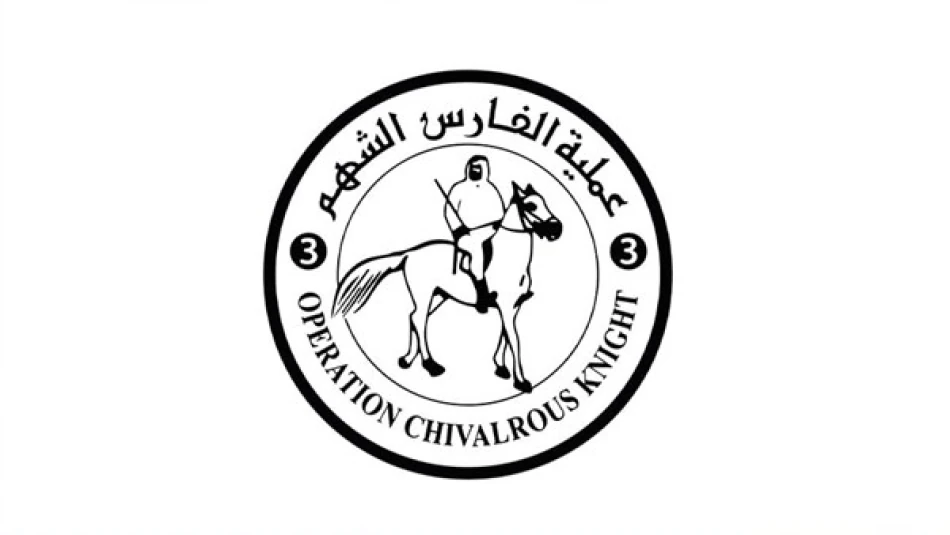
UAE Airlifts 68 Aid Flights, Delivers 540 Tons of Food Supplies to Gaza
UAE Leads Multi-National Humanitarian Coalition as Gaza Aid Reaches Critical Mass
The United Arab Emirates has executed its 68th airdrop mission to Gaza, marking a significant milestone in what has become one of the region's most sustained humanitarian operations. Through coordinated efforts with Jordan, Germany, Italy, the Netherlands, Belgium, and France, the UAE has now delivered over 3,908 tons of aid to Palestinian civilians, demonstrating how middle powers can mobilize international coalitions during protracted crises.
Scale and Scope of Operations
The latest mission, conducted under the "Birds of Goodness" initiative within the broader "Gallant Knight 3" operation, delivered essential food supplies prepared with support from multiple UAE charitable institutions. Simultaneously, 20 trucks carrying 540 tons of food supplies crossed into Gaza through land routes, highlighting the UAE's multi-pronged approach to circumventing logistical challenges.
This dual delivery method—combining airdrops with ground convoys—reflects lessons learned from previous humanitarian crises where single-channel aid delivery proved vulnerable to disruption. The UAE's strategy mirrors successful models used during the Berlin Airlift and more recent operations in Afghanistan and Syria.
Diplomatic Architecture Behind the Aid
Regional Partnerships
The collaboration with Jordan is particularly strategic, as the Hashemite Kingdom provides crucial airspace access and logistical coordination. This partnership builds on decades of UAE-Jordan cooperation and positions both nations as pragmatic actors focused on humanitarian outcomes rather than political positioning.
European Engagement
The participation of Germany, Italy, the Netherlands, Belgium, and France signals broader European buy-in to UAE-led humanitarian initiatives. This represents a shift from traditional aid models where European nations typically lead international relief efforts, instead recognizing the UAE's logistical capabilities and regional relationships.
Strategic Implications for Regional Leadership
The UAE's sustained commitment—68 operations representing nearly 4,000 tons of aid—positions the country as a reliable humanitarian actor capable of long-term engagement. This consistency matters in a region where aid fatigue and shifting political priorities often undermine relief efforts.
Unlike emergency responses that fade after initial media attention, the UAE's methodical approach suggests institutional capacity for sustained operations. This mirrors the country's broader strategy of building soft power through humanitarian leadership, previously demonstrated in Yemen, Syria, and during natural disasters globally.
Operational Innovation in Crisis Response
The combination of charitable institution support with government logistics represents a hybrid model that maximizes resources while maintaining operational flexibility. UAE charitable organizations provide funding and supplies, while government assets handle complex delivery logistics—a division of labor that could serve as a template for other nations.
The multi-national framework also distributes costs and risks while providing political cover for participating nations. European countries can demonstrate humanitarian engagement without navigating complex regional politics, while the UAE gains international legitimacy for its leadership role.
Broader Context for Middle East Humanitarian Policy
This operation occurs against the backdrop of traditional aid mechanisms struggling with access and scale challenges. The UAE's approach—bypassing some conventional diplomatic channels while maintaining broad international support—may influence how future humanitarian crises are addressed in the region.
The sustained nature of these operations, now spanning months with no apparent end date, suggests the UAE views humanitarian leadership as a long-term strategic investment rather than a short-term diplomatic gesture. This commitment level distinguishes the current effort from typical crisis responses and may establish new expectations for regional powers during humanitarian emergencies.
Most Viewed News

 Layla Al Mansoori
Layla Al Mansoori






